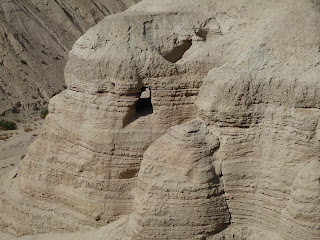Going Underground
During our last full day of our trip we had a free day in Jerusalem. Some went shopping, others enjoyed museums like The Rockefeller or The Yad Vashem Museums. Pastors Gary Heintz and Mark Dressler tried something a little less conventional. They went under the city of Jerusalem and explored Hezekiah's Tunnel. This tunnel was build by King Hezekiah to divert water from the Gihon Spring into the city when the Assyrian army was approaching. (2 Kings 20:20 and 2 Chron 32:30) The idea was to prevent the Assyrians from having water, and to ensure the residents of Jerusalem a constant supply during the siege warfare.Many biblical critics doubted that the tunnel ever existed but a few years ago it was discovered, and now it has been opened to the public. If you don't suffer from claustrophobia (and don't mind getting a bit wet) you can walk through this 1700 foot tunnel.
An ancient inscription was found in the tunnel that explains how the tunnel was created: because the Assyrians were coming and time was an issue, Hezekiah commissioned two teams to start digging, one at the source of the spring and the other at the destination pool. The idea was that they would meet in the middle-and they did. Without any GPS or sonar devices the teams managed to meet underground and complete the tunnel in time. It is considered the greatest works of water engineering technology in the pre-Classical period and it is one of the few intact, 8th century BC structures in the world that the public can not only visit, but enter and walk through.
This sign marks the spot where the two teams met.
Throughout the tunnel you can see millions of pick marks from the tools they used to chip away the stone. At times the tunnel is 30 feet high but the majority of the tunnel is only five to six feet high, and only two and a half feet wide. At the start the water is about three feet deep, but the remainder of the tunnel it is only about a foot deep.
The tunnel exits at the pool of Siloam which is the pool where Jesus healed the blind man. The pool is still there today, but is much smaller than it was in Jesus' day.
Entering Hezekiah's Tunnel
At this point the tunnel is only about 4.5 feet tall.

















































